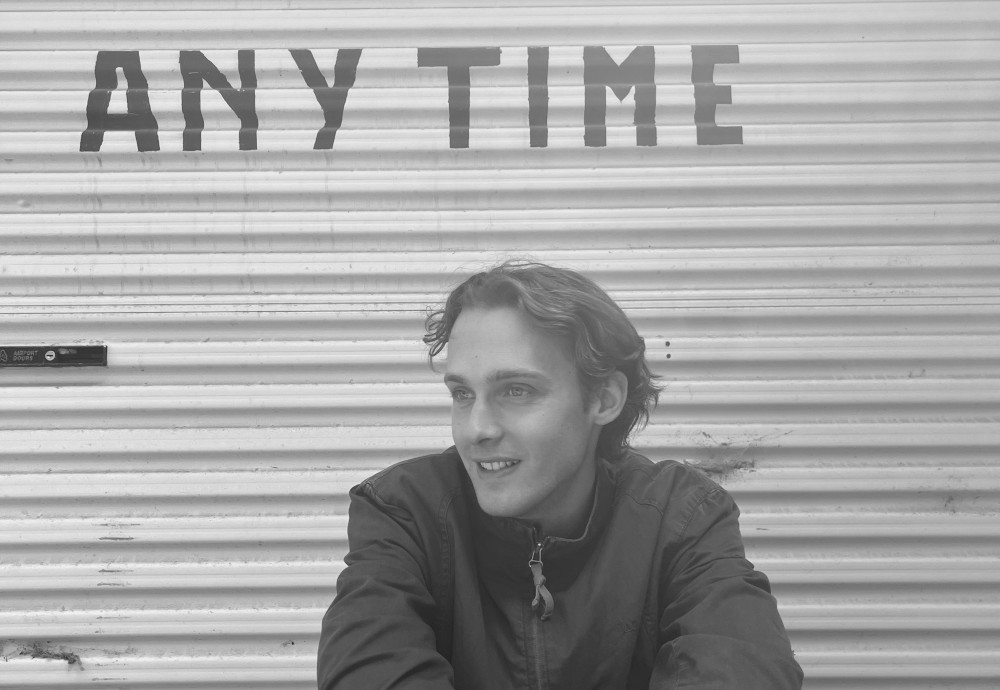
‘I am the most boring writer that has ever lived’.
This the opening to the short essay, ‘Being Boring’, by the conceptual writer Kenneth Goldsmith. ‘My books’, he says, ‘are impossible to read straight through’1. A short description of any of his published works is enough to get an idea of what this means: there is a book where Goldsmith meticulously records each movement of his body for a day; one that is a retyping of an entire issue of the New York Times, each page copied from the top left to bottom right so that the newspaper is strangely reformatted; there are transcripts of weather forecasts, traffic reports and baseball commentary. As published works, made up of hundreds of printed pages, these texts deliberately produce boredom. Each one effectively constitutes an endurance test, a kind of reading in which interest may be found among the heap of everyday language, but only through, against, or in spite of, the tedious procedures that generate and constrain it. At the same time, however, the very fact that these books can be summarised so well in a single sentence suggests another way of approaching them. Goldsmith’s claims to boredom, as a self-described ‘old-school avant-gardist’ unphased by the apparent death of avant-gardism, also function as provocations that might not actually need to be realized2. He continues, ‘you don’t really need to read my books to get the idea of what they’re like; you just need to know the general concept’3.
In this sense Goldsmith’s works aren’t really boring at all, but impossibly short, consumed in the instant that one understands the idea behind them: the selection of the unaltered text; the procedure for appropriating it. Boredom becomes a means of directing attention away from the book onto the gesture of publishing a certain chunk of existing text as a book. They function as questions that concern our definition of poetry, and as questions, they are construed by this gesture rather than through the content of the book itself. And as a source of literary scandal, they form part of the machinery that has kept Goldsmith at the centre of artworld spectacle for the last two decades or so. However, this also, perhaps more charitably, points to a curious relationship between shock and boredom, whereby the underside of Goldsmith’s boredom – tedium paradoxically put in the service of scandal – is as important to the effect of his work as the experience of enduring one of his lengthy readings. The intention of this essay is to think about boredom as the underside to the shock-effect of experimental writing, from which I want to briefly elaborate a vocabulary for the set of relations that structure the kinds of attention – held, diverted, distracted etc. – that we bring to difficult works of writing.
This provocation, that there could be a practice of writing whereby the ‘concept’ suggested by an appropriated text is more important than the text itself, has continued to bring attention to the self-described ‘movement’ of conceptual writing, even if its deadpan jokes no longer land with the force that they once did4. Central to the practice of these poets is a claim to the value of an ‘expressionless’ form of writing, both as a mode of critique and as a way of redefining the limits of poetry as a response to media (poetry can no longer be practiced as it once was before the internet). Here, I want to consider Goldsmith’s books as works that demand certain kinds of attention, rather than as modes of critique of ‘creativity’ or ‘genius’, and so an evaluation of these arguments will not be at the centre of this essay. I will instead tease out a temporal logic – a way of experiencing time – at work in the formal experiments of ‘avant-garde’ artworks like Goldsmith’s, registered in the judgments of ‘boredom’ and ‘distraction’, even where this is not the explicit focus of his writing.
To talk about an experience of conceptual writing seems counterintuitive, since it is the very attempt to deny the experiential in favour of the conceptual which makes up the gesture of the practice. But as with all conceptual art, this ‘concept’ can only appear as it is evoked in an object (the text, the book), so that some minimal residue of experience remains necessary, if only for it to be denied by the work. That is, even if the end of Goldsmith’s texts are directed towards the conceptual frame that surrounds the publication of a text, a material or aesthetic – spatial and temporal – aspect is required if there is to be an artwork at all. To say that a text is ‘boring’ already registers this; it is a reference to the experience of time in engaging with the work, referencing the book’s length, for example, or the tedium of its repetitions. I want to remain with the boredom of actually reading Goldsmith’s poetry. What interests me in Goldsmith’s ‘Being Boring’ essay, beyond the somewhat sarcastic and certainly un-boring claim that one could be the most boring ever, is the history of a boring avant-garde that Goldsmith invokes and in which he has situated himself.
This tradition, which dates back through Goldsmith’s references to Gertrude Stein’s The Making of Americans (1925), reaches its height in the art of the 1960s. The typical examples here could be Andy Warhol’s eight-hour Empire (1965), a film that is simply a single, stationary shot of the empire state building, or the minimalist composition of John Cage or Morton Feldman. As a number of critics have elsewhere noted, the practice of producing the experience of tedium in an artwork, what the Fluxus artist Dick Higgins called the ‘super-boredom’ of this art, became characteristic of the forms of experimentation during this moment5. Goldsmith, though, singles out the poet Jackson Mac Low, whom he elsewhere refers to as the ‘king of boredom’, beginning another essay with a familiar conceit: ‘Mac Low was the most boring writer that ever lived’. Despite this kinship, he is quick to note that, ‘Jackson was boring in a completely different way than I am’6. Nonetheless, Goldsmith’s appeal to a tradition of boring art, his claim to a lineage that provides the context for his own experiments, is key to the way he understands his own practice. What, then, are these differences to the earlier strategic use of boredom in Mac Low’s art, and what kind of continuity is Goldsmith invoking in an essay like ‘Being Boring’. In short, how boring is Goldsmith’s ‘uncreative writing’ really being?
- This essay was published as the artist statement accompanying his selection in a 2007 anthology of American poetry, although it was written as early as 2005; Kenneth Goldsmith, ‘Being Boring’, in American Poets in the 21st Century: The New Poetics, edited by Claudia Rankine and Lisa Sewell, Wesleyan University Press, 2007, p. 361. ↩
- Alex Wilkinson, ‘Something Borrowed’, The New Yorker, 2015. ↩
- Goldsmith, ‘Being Boring’, p. 361 ↩
- For a perspective on Goldsmith’s recent controversies, see: Joey De Jesus, ‘Goldsmith, Conceptualism and the Half-Baked Rationalization of White Idiocy’, Apogee, 18 Mar. 2015, online. ↩
- Dick Higgins, ‘Boredom and Danger’, Something Else Newsletter, Volume 1, Number 9, December 1968, p. 2.; for an introduction to this literature see: Michael Newman, ‘The Long and the Short of It: Boredom After the End of Great Boredom’, in On Boredom: Essays in Art and Writing, edited by Rye Dag Holmboe and Susan Morris, UCL Press, 2021; Eldritch Priest, ‘Listening to Nothing in Particular: Boredom and Contemporary Experimental music’, Postmodern Culture, Volume 21, Number 2, 2011; Sianne Ngai, ‘Stuplimity’, in Ugly Feelings, Harvard University Press, 2005. ↩
- Kenneth Goldsmith, ‘The King of Boredom’, University of Pennsylvania, online, 2005. Later published in The Brooklyn Rail 40, March 2006, online, p. 1. ↩









